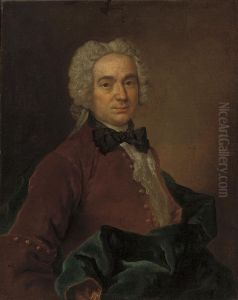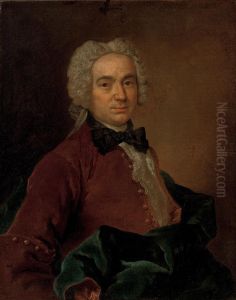Charles-Etienne Gueslain Paintings
Charles-Etienne Gueslain was a French sculptor known primarily for his work during the late 18th century. Born in 1741 in France, Gueslain was part of an era that was rich in artistic expression and transformation, coinciding with the final decades of the Ancien Régime and the tumultuous times of the French Revolution.
Gueslain's career began in an age where Rococo art was giving way to Neoclassicism. His works, though not as widely recognized as those of his contemporaries like Jean-Antoine Houdon or Augustin Pajou, still reflect the changing tastes and ideological shifts of the period. He was adept in working with various materials, including marble, bronze, and terracotta, and his sculptures often depicted mythological themes, portraits, and allegories that were popular in the Neoclassical movement.
During his lifetime, Gueslain witnessed and was inevitably affected by the political upheavals of the French Revolution and the rise of Napoleon. The Revolution brought about significant changes in the patronage system and the types of commissions available to artists. The art market's transformation during this period would have influenced Gueslain's work and the opportunities he had to produce and sell his art.
Gueslain's career was also marked by his involvement with the Académie Royale de Peinture et de Sculpture, which was later reorganized as the Académie des Beaux-Arts in the National Institute of France. His association with these institutions would have placed him within a network of artists who were defining the artistic standards of the time.
Charles-Etienne Gueslain passed away in 1810, leaving behind a body of work that contributes to our understanding of French sculpture at the cusp of modernity. While he may not be as well-known as some of his contemporaries, his sculptures nevertheless represent the aesthetic and philosophical shifts that characterized the late 18th century and the early 19th century. His works are part of the narrative that details the transition from the ornate Rococo style to the more restrained and classical Neoclassical form.

